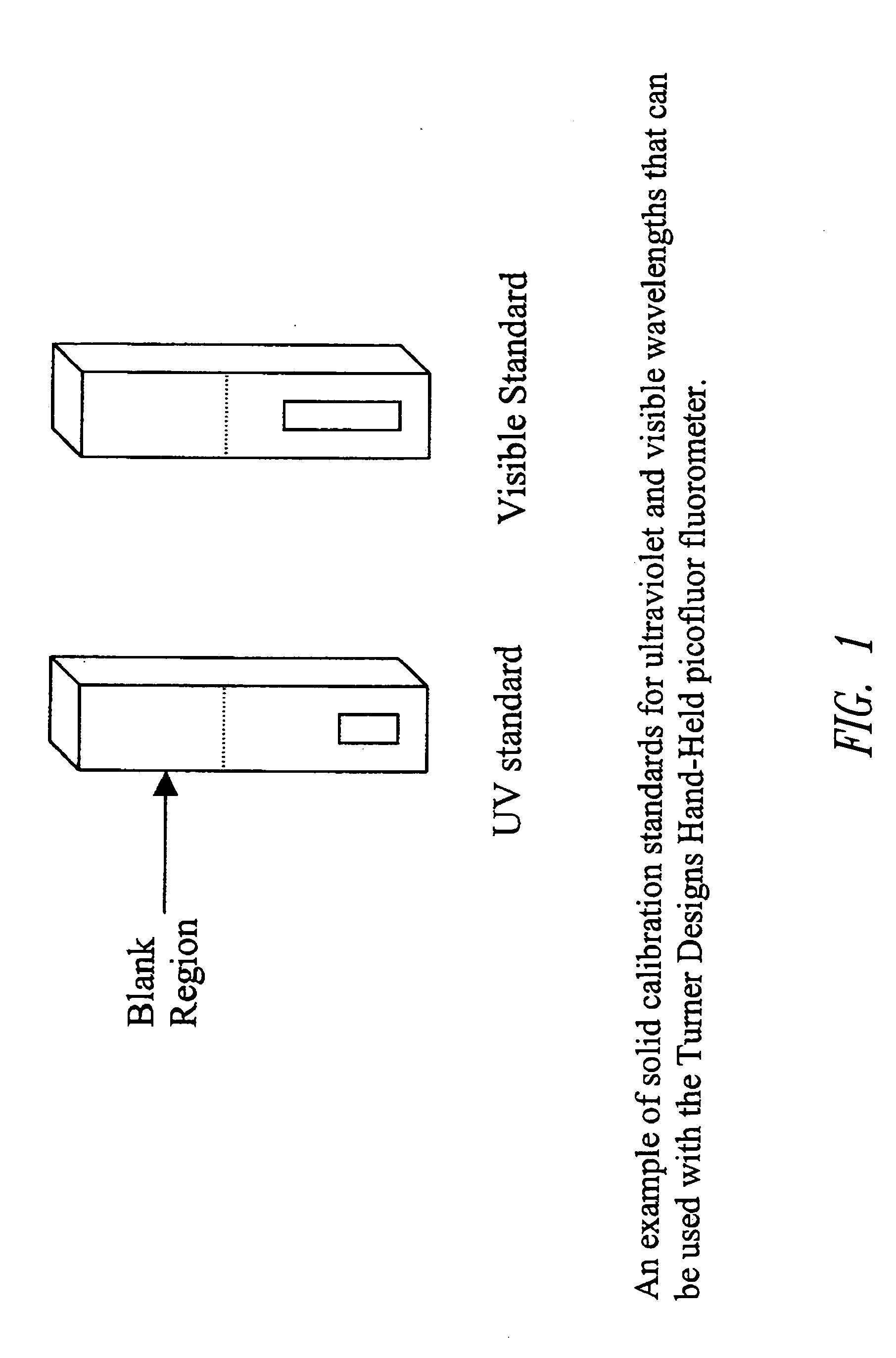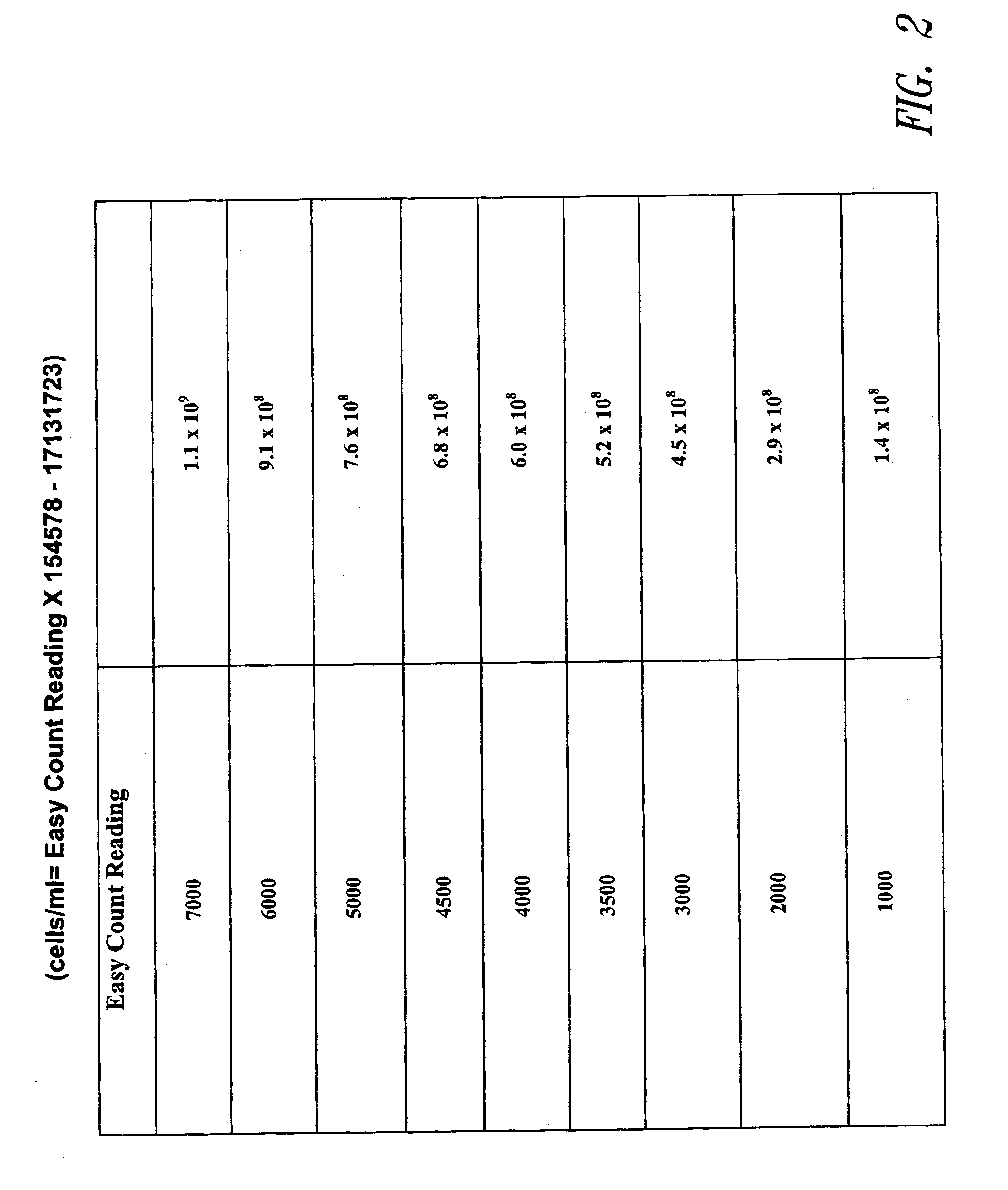Method and apparatus for viable and nonviable prokaryotic and eukaryotic cell quantitation
a prokaryotic and eukaryotic cell and quantitation method technology, applied in chemical methods analysis, instruments, enzymology, etc., can solve the problems of difficult to interpret colony counts, inaccurate estimations, and more severe problems, so as to speed up the conversion rate and increase the uptake rate of dye into cells
- Summary
- Abstract
- Description
- Claims
- Application Information
AI Technical Summary
Benefits of technology
Problems solved by technology
Method used
Image
Examples
example i
Materials and Calibration
[0058] The following shows examples of solutions, volumes and concentrations that can be used to carry out the invention. Other concentrations and volumes and different buffers with different pH values may be used. The samples and reaction solutions may be provided in any volume necessary for detection, however, in the present embodiment, small volumes (less than 1 ml) are utilized such that reagents and sample amounts are kept to a minimum. The volumes and concentrations to be utilized are any that are convenient to the practitioner of the methodology. In certain embodiments, the sample and reagent amounts range from 1 to 10,000 micro liters.
[0059] The reader used in the present embodiment is a “picofluor” hand-held fluorometer from Turner Designs, Sunnyvale, Calif. 94086. Any fluorometer that can measure fluorescence at specific wavelengths for detection of the dyes or cells can be employed in the invention. Ideally, the fluorometer can switch back and f...
example ii
Total Cell Counts
[0085] Total cell counts can be determined by a variety of methodologies, including using the fluorometer noted above. UV operation mode is selected. A fixed volume (200 microliters) of Cell preparation solution is added to the glass sample vial. 5 microliters of sample (yeast cells) is then added to the Cell preparation solution in the vial and centrifuged for about 30 seconds to sediment the a cell pellet. The cell pellet is resuspended in about 100 microliters of Cell preparation solution to the sample vial. The sample vial is then read in fluorometer. See FIG. 2.
example iii
Viable Cell Counts
[0086] Live cells are quantitated utilizing a dye that is detectably altered by an intracellular enzyme. For example, the fluorometer noted above is set in visible mode and a fixed volume (200 microliters) of Cell preparation solution is added to the sample vial. 5 microliters of sample is added to the solution A in the sample vial and centrifuged for 30 seconds. 100 microliters of Suspension solution is added to the sample vial and 5 microliters of Reaction solution is added to the sample vial. The sample is mixed and placed in the reader and fluorescence determined at time zero and again at 15 minutes. This is the value that will be compared to the Easy Count correlation chart for conversion to cells / ml. See FIG. 3.
PUM
| Property | Measurement | Unit |
|---|---|---|
| volumes | aaaaa | aaaaa |
| temperature | aaaaa | aaaaa |
| fluorescence | aaaaa | aaaaa |
Abstract
Description
Claims
Application Information
 Login to View More
Login to View More - R&D
- Intellectual Property
- Life Sciences
- Materials
- Tech Scout
- Unparalleled Data Quality
- Higher Quality Content
- 60% Fewer Hallucinations
Browse by: Latest US Patents, China's latest patents, Technical Efficacy Thesaurus, Application Domain, Technology Topic, Popular Technical Reports.
© 2025 PatSnap. All rights reserved.Legal|Privacy policy|Modern Slavery Act Transparency Statement|Sitemap|About US| Contact US: help@patsnap.com



